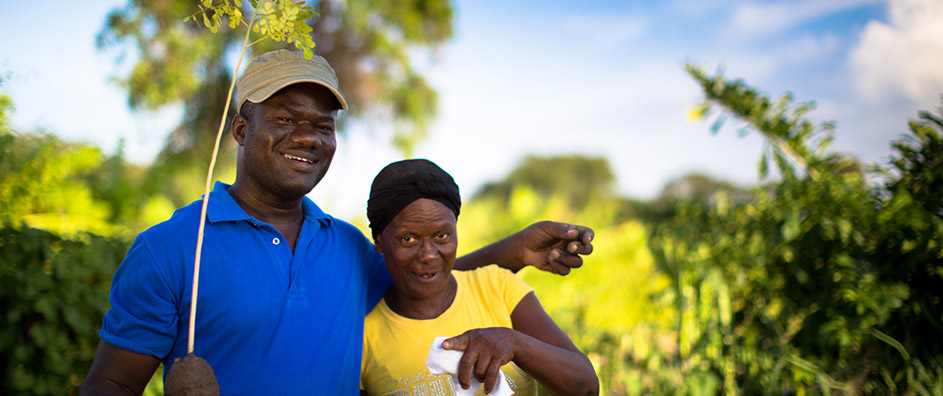In the contemporary discourse surrounding sustainable agriculture, the Smallholder Farm Model emerges as a beacon of innovation and practicality, particularly within the Bahai teachings. This model, which harmoniously integrates tree planting with food cultivation, epitomizes a holistic approach to farming that not only addresses food security but also fosters ecological balance and social equity. The exploration of this model illuminates several dimensions: agricultural practices, environmental stewardship, community empowerment, and spiritual underpinnings.
Agricultural Practices in the Smallholder Farm Model
At the core of the Smallholder Farm Model is an array of agricultural practices that advocate for the cultivation of both trees and food crops. This dual cultivation strategy is designed to maximize land use while ensuring a diversified yield. The intercropping of trees with annual crops provides myriad benefits such as enhanced soil fertility, improved microclimates, and increased resilience to climatic variations. For instance, nitrogen-fixing trees can enhance soil quality, contributing to a sustainable supply of nutrients for surrounding crops.
Moreover, the inclusion of trees within agricultural systems offers additional economic advantages. Trees can provide income through fruit production, timber, and non-timber forest products. This multifaceted approach not only supports farmers economically but also discourages deforestation, advocating instead for resource conservation. The model’s inclination towards permaculture principles illustrates a shift towards systems that are regenerative rather than extractive.
Environmental Stewardship and Biodiversity
Environmental stewardship is a fundamental tenet of the Bahai teachings, and the Smallholder Farm Model profoundly embodies this principle. By integrating biodiversity into farming systems, this model promotes ecological resilience. The co-cultivation of trees and crops creates habitats for numerous species, thereby enhancing biodiversity and fostering an ecosystem that can withstand the stresses of climate change.
The practice of agroforestry, where trees and crops are grown in a mutually beneficial manner, further underscores the commitment to environmental health. By mitigating soil erosion, enhancing water retention, and sequestering carbon, agroforestry practices aligned with the Smallholder Farm Model contribute to climate mitigation efforts. Consequently, farmers who adopt this model not only ensure their own agricultural viability but also act as stewards of the planet, promoting a healthier Earth for future generations.
Community Empowerment and Socio-economic Development
The Smallholder Farm Model is not solely an agricultural framework; it is a catalyst for community empowerment. By enabling small-scale farmers to leverage their land through mixed-crop systems, this model fosters socioeconomic development at the grassroots level. The engagement of local communities in these farming practices leads to the enhancement of food sovereignty, allowing them to reclaim control over their food sources.
Moreover, the model encourages collaborative efforts among farmers, granting them the ability to share knowledge, resources, and techniques. This communal approach not only strengthens social bonds but also creates networks of support which are crucial for overcoming challenges. The empowerment of women, in particular, is of paramount importance; as women often play a pivotal role in agricultural production, the model provides them with opportunities for leadership and economic independence.
Furthermore, initiatives rooted in the Smallholder Farm Model can lead to the establishment of local cooperatives, thereby facilitating access to markets, resources, and training. Through these cooperative efforts, communities can enhance their bargaining power, ensuring fair compensation for their products and contributing to local economies.
Spiritual Underpinnings and Ethical Considerations
The Bahai teachings accentuate the indivisible connection between material progress and spiritual development. The Smallholder Farm Model manifests this philosophy by intertwining agricultural practices with ethical considerations. Farmers are encouraged to view their work not merely as a means of sustenance, but as an act of service to humanity and the Earth.
Engagement in responsible farming practices fosters a sense of stewardship, reflecting the Bahai principle of the oneness of humanity and the interconnectedness of all life. This spiritual perspective prompts farmers to act in accordance with ecological balance, embracing practices that honor the sanctity of the environment. Thus, farming transcends mere economic activity, evolving into a profound act of devotion that affirms the holistic unity of social, environmental, and spiritual dynamics.
Conclusion: A Vision for the Future
The Smallholder Farm Model stands as a transformative approach, encapsulating the fundamental tenets of Bahai teachings while addressing pressing global challenges. Its synthesis of agricultural innovation, environmental stewardship, community empowerment, and profound ethical reflections presents a compelling framework for sustainable development. As the world grapples with the complexities of food security, climate change, and social inequity, the principles embedded within this model offer a visionary pathway towards creating a more harmonious and sustainable future for all.
